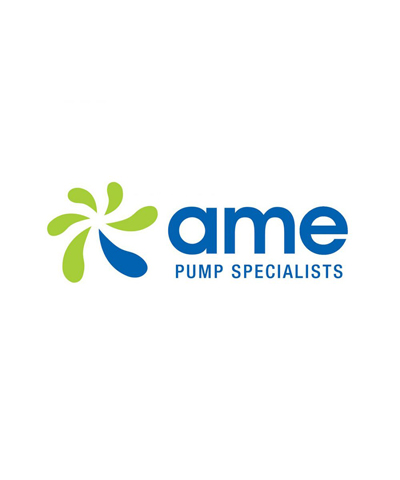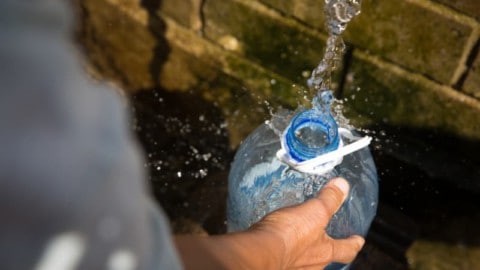A tamper-resistant method of protecting centrifugal pumps from running off their curve is to place a correctly sized flow controller close to the pump discharge.
A common cause of submersible centrifugal pump failure is allowing them to run at below their minimum operating head. This is the same as allowing them to deliver too high a flow rate. For a long trouble-free life, flow rate and head should be maintained within the manufacturers specifications.
A typical pump performance curve is shown below.
The system also has its own characteristic curve, which will be influenced by friction and other mechanical devices such as valves, fittings, orifices & other components. Gate valves and pressure sustaining valves are often used to prevent this, however, their disadvantages include:
• being prone to unauthorized adjustment
• can fail due to gate vibrating loose
• impose an unnecessarily high headloss at the duty point, reducing pump output and efficiency, and
• can require maintenance.
Flow control valves can offer protection without these disadvantages.
Headloss
The benefit of the Maric flow control valve is that it will result in less energy or head loss than the common gate valve, fixed orifice or pressure-sustaining valve. This is because; as the flow rate through the valve reduces below its rated flow, the head loss drops off significantly. In other words, duty flow rate is usually well in from the right hand side of curve. The flow controllers’ orifii actually open up as the pressure differential across it reduces in an attempt to maintain the same flow. With a “fixed orifice” gate valve, head loss at lower flows remains high, and the head loss across a pressure sustaining valve will not change at all, resulting in a significant energy loss at the duty point. This increases pumping costs, and may necessitate increasing the pump size. The Maric valve will impose whatever resistance (head) is required in order to maintain the valves rated flow rate.
For example, when flow rate through valve is 70{87a03eb4327cd2ba79570dbcca4066c6d479b8f7279bafdb318e7183d82771cf} of its rated flow, the headloss is around 4 metres only.
What will be the headloss across the valve in my installation?
It depends on the flow rate, i.e, at valves full rated flow, headloss will be between 140 and 1000 kPa*. At a lower flow rate, i.e., duty point, headloss will be less. e.g., 60{87a03eb4327cd2ba79570dbcca4066c6d479b8f7279bafdb318e7183d82771cf} of flow = 30 kpa only. (*For standard “Precision” spec 140 – 1000 kPa flow controllers )
Pumps can be damaged on:
• Any bore, where people can unwittingly open up the bores’ gate valve in an attempt to increase flow.
• High draw-down bores, (i.e. a relatively high standing water table at start-up, as compared to a much lower level for the normal operating condition). At start-up, these pumps have little head against them.
• Empty pipe work at start–up (i.e. lack of, or faulty check valve, or where lines on surface drain empty). It takes time to fill pipes sufficiently to obtain the required head.
• Over-pumping beyond the refill rate, to point of drawing in air or sand, leading to unstable conditions.
• A burst in the pipework may allow uncontrolled flow and upthrust or cavitation.
• Pumps with two separate duties; eg ne, a tank elevated 50m up a hill, and the other, to feed a dam at the same elevation as the pump. (Without a flow controller here, pump damage may result, due to lack of head).
• Rising water tables; Limiting pump peak flow rate can prevent electric motors from overloading as operating head reduces.
Other Applications;
• An existing pump at rivers edge fills tanks with water. The local council mandates that, for the health of the river, property owners must reduce rate of draw. It is stipulated that a non-adjustable flow control device is used.
Key features of Maric Flow Controllers
• Tamperproof: Maric valves are non-adjustable, which prevents owners from trying to “get more from their bore”.
• Maintenance free, reliable and self-cleaning: As there are no wearing parts, the valves require no maintenance, adjustment or cleaning during their 20+ year life span. ■
See our next issue for Part 2 where we look at a case study on pump protection.


















